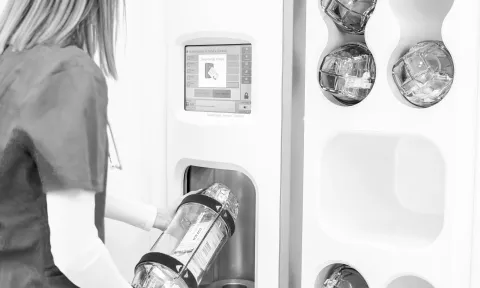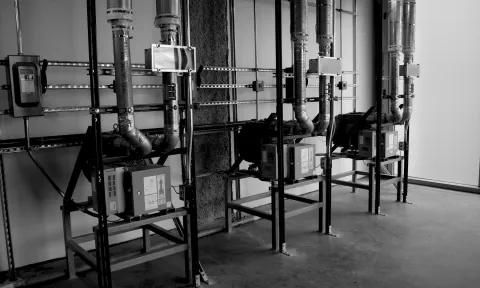You might also be interested in this

Customer Pledge

Superior Transport Automation

Pneumatic Tube System Components


The Pneumatic Tube System Supports Myriad Hospital Operations
6/21/2024
Over the last few decades thousands of new hospital technologies have come on the market. As expected, the more exciting ones have garnered the most attention. Those that have consistently proven their value, however, are the ones most relied upon by hospital IT and facilities managers.
One critical piece of technology that gets less attention but has become a staple in most hospitals is the pneumatic tube system. These are the systems hospitals depend on to connect all wards, surgical rooms and departments with the hospital’s laboratory and central pharmacy. Pneumatic tube systems significantly shorten the delivery times of sensitive materials and medications throughout the hospital.
How well are you maintaining your hospital’s pneumatic tube system?
Because pneumatic tube systems have proven their reliability as workhorses, hospital facilities managers and IT professionals often neglect to put sufficient attention on maintaining them. It is understandable given the workloads these professionals sustain on a day-to-day basis. However, maintenance of these systems is key to helping avoid serious materials transport issues.
Maintenance typically involves several areas. Keeping the software up to date is essential as well as taking advantage of updates and upgrades to ensure that the switches, stations, and crossings meet the latest technological standards. Any issues must be resolved quickly to keep the pneumatic tube systems working and materials moving.
Proper maintenance and support of these systems is critical because any issue at any point in the tube network can quickly immobilize the entire system. When this occurs, automated, secure movement of sensitive materials and medications comes to a standstill.
What happens after a tube system failure can quickly become costly to the hospital management who must do one of the following:
Who is in charge of keeping your pneumatic tube system working efficiently?
Many hospitals rely upon their IT or facilities management people to maintain their pneumatic tube systems and step in and fix a malfunction. However, this may present its own set of issues including:

What is your plan?
To minimize downtime hospitals need fast access to experienced pneumatic tube system technicians. Here are some of the options available:
Don’t neglect the importance of preventative maintenance.
One of the best ways to avoid issues with your pneumatic tube system is to obtain a preventative maintenance agreement from your supplier. That agreement should provide the following:
What is the best fit for your hospital?
Under consideration should be the size of your hospital, the complexity of your services and patient needs, and how reliant you are on your pneumatic tube system. Collaboration between hospital IT leadership, hospital facilities managers and other key stakeholders can help determine this.
Running scenarios and analyzing their impact on hospital operations can help put the right plan together for your hospital. Your management team can work together to assess a variety of possible backup plans, and what each involves from an operational and expense standpoint. Most importantly, the impact of a failure on medical staff and other employees should be considered.
Don’t wait for a tube system failure to act.
Now is the time to put a plan together that provides immediate access to the level of expertise needed to ensure that your pneumatic tube system is well maintained, and issues quickly resolved.
Don’t wait for a failure to occur. A system failure means instant downtime which impacts everyone in the hospital at all levels, including patients. It can quickly become time consuming and expensive to identify and fix the issue, as well as resorting to alternative means of materials transport.
Pneumatic tube systems will continue to play a critical role in a hospital. Make sure you are taking maintenance of these critical systems seriously and planning accordingly. You’ll be glad you did.




Contact our knowledgeable specialists to discover how our range of automation solutions can boost efficiency, reduce costs and enhance care at your healthcare facility.
Contact us